10 Facts About The Largest Peninsula In The World
The Arabian peninsula or Arabia is the largest peninsula in the world. Also known as the Island of Arabs or Jazirat-Al-Arab, it is located in the southwestern part of Asia. It is bounded by important gulfs and seas which serve as vital shipping lanes, connecting the Middle East with the other world economies.
The Arabian peninsula has a total area of about 1,250,000 square miles. It is surrounded by the Red Sea and the Gulf of Aden from the southwest. The southeastern coast faces the Arabian Sea while the eastern coastline is enclosed by the Oman Gulf and the Persian Gulf.
The Peninsula is not clearly demarcated, however it includes the wealthiest nations of Oman, UAE, Saudi Arabia, Yemen, Qatar, Kuwait, southern parts of Iraq and Jordan.
1. Desert covers the largest portion of the Arabian Peninsula
An enormous chunk of Arabia is covered with shifting sand dunes. In fact, the second-largest desert in the world after Sahara is found in the Arabian Peninsula. It is home to numerous Bedouin tribes practising the old way of life. Spanning more than 899, 618 square miles, it is three times larger than Spain.
The Empty Quarter or the Rub’ al Khali is a part of the expansive Arabian desert. It covers a thousand kilometres and is known for the highest sand dunes rising to 250 metres. The terrain has gravel and gypsum mixed with reddish-orangish sand. The Umm al Salim region on the eastern end is known for brackish salt flats.
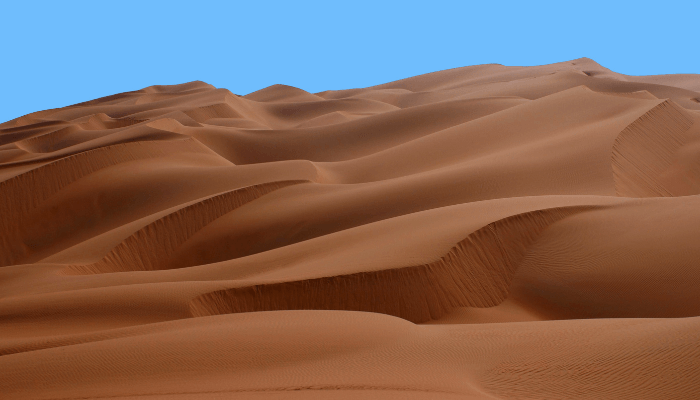
Interestingly, the sand dunes of Empty Quarter retain their shape even though strong winds blow away sand particles. This is due to nearby sabkhas or mudflats that supply moisture to the base of these dunes. The picturesque desert has been a part of many movies such as the 2015 Star Wars. It is also a tourist destination where people enjoy desert safaris and camp nights under the stars.
The largest tribe inhabiting the Rub’ al Khali is the Al Murrah. They live in tents between the regions of Al-Ahsa and Najran. Other tribes of the region include Banu Hamdan and Bani Yas. Roads connect these settlements to nearby towns and water resources.
2. Formed 60 million years ago
The geological history of the Arabian peninsula can be traced back to a hundred million years. The process geared up with the Red sea rift which occurred 56 to 24 million years ago, creating the landmass known as Arabia. The peninsula lies on the Arabian tectonic plate, hence it is also called the Arabian subcontinent by geographers.
The Arabian plate is drifting apart from Africa and moving towards Asia. It is pressing into the Eurasian landmass, especially the Zagros mountains. In a hundred years or so, the region may become seismically active.
The Peninsula is home to several extinct volcanoes whose eruptions ceased eight thousand years ago. However, solidified lava formed Harrahs or black mounds, a unique feature of Western Arabia. Exposed sedimentary and igneous rocks cover the peninsula. The oldest ones are found in the Nubian shield, close to the Red Sea coast while the youngest formations line the Persian gulf. The Semail Ophiolite covers the Arabian mountain ranges and Oman.
The sedimentary deposits consist of limestone, shale and sandstone. They are found in the Arabian shield and date back to the Paleozoic period, around 400 to 550 million years ago. Traces of ancient seas and trapped water are found in the eastern parts of the Peninsula. Before carving political boundaries, the region was divided into four areas; the central plateau or the Najd, Southern Arabia, East Arabia or Al-Bahrain and the Hejaz.
3. Experience hot and arid climate
The Arabian Peninsula faces scorching heat, with the highest temperatures reaching up to 55 degrees Celsius in summer. The Tropic of Cancer divides the region as it passes through Medina in Saudi Arabia. Inner regions are prone to hot and dry weather while coastal areas and southern mountainous zones struggle with high levels of humidity. Fog and morning dew is common in these areas. The Autumn and spring seasons witness cool breezes and pleasant weather in most places.
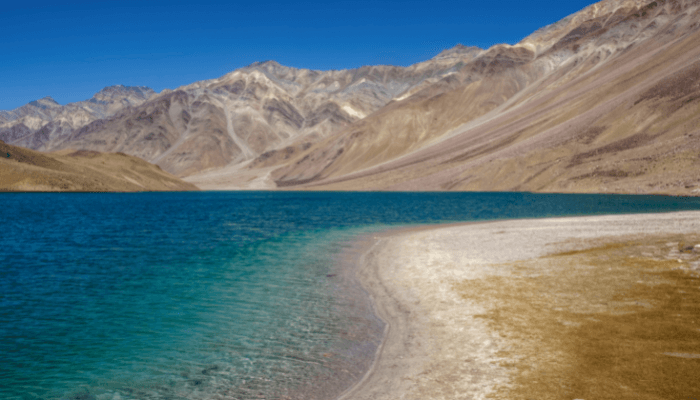
Winters are mild except in the elevated regions of the north and the mountain zones that witness occasional snowfall. Water laden winds from the Indian Ocean lose their moisture before arriving at the peninsula, causing scanty rainfall. Desert areas face torrential rains rarely, accompanied by hail, leading to flash floods. Droughts are common in the peninsula, making water a prized commodity.
Monsoon months are short and generous to the southwestern part of the Arabian peninsula, which sees more precipitation compared to other areas. Winds arriving from the Mediterranean sea towards the Persian Gulf bring rain to Northern regions and Yemen.
4. Possessor of the world’s largest oil reserves
Arab nations have strong economies attributed to the presence of abundant black gold in the region. Large oil fields are found in Yemen, Saudi Arabia, Iran and Iraq. The Middle East meets the world’s energy requirements and controls the oil prices, having a significant hold on the global economy. This also accords geopolitical importance to the Peninsula.
Oil was discovered in the region in the 1900s and Saudi Arabia possesses the largest oil reserves in the Peninsula, amounting to 298 thousand million barrels. The Al-Ghawar, situated in the Al-Ahsa province of Saudi Arabia is the biggest oil field on earth. Operated by Saudi Aramco, it covers 280 kilometres and comprises a third of the nation’s total oil production. Burgan oil fields in Kuwait and Qurna II and Rumaila of Iraq are other prominent oil fields producing thousands of barrels.
Huge reserves of natural gas are also found in the region. However, exploiting them requires huge investments. Much of the liquified natural gas is exported to Europe and South Asia.
5. Rich in minerals and precious metals like gold, silver and copper
Apart from oil and natural gas, the Arab countries also have metals and minerals. However, these resources are not exploited as the economy is highly dependent on oil. Many countries have financed exploration programs for diversifying their economic base.
In ancient and mediaeval times, gold and silver were mined from Mahd al-Dhahab and Marib in Hejaz. Copper deposits are found in the mountains of Oman. Iron ore is abundant in northern Najd and western parts of Saudi Arabia. Large amounts of gypsum, salts, phosphorite, clay, shale, magnesite, quartz, silica and stone are also found. These materials are used for making traditional Arabian pottery, handicrafts, utensils and bricks.
Oyster cultivation was once a lucrative profession in the Arabian peninsula. Top-quality pearls were derived from the Persian gulf’s oyster shells. The major centres of pearling were Bahrain, Qatar and the UAE. However, the 1930s economic slump and the stiff competition from Japanese pearls led to declining profits and the eventual closure of this business.
6. Home to unique flora and fauna
Date palms and coconut palms are the most common trees on the Peninsula. High-quality dates are exported from the Muslim holy cities of Mecca and Medina. The scarcity of water and infertile soil make widespread agriculture impossible. However, some places are suitable for growing grains like millets, wheat and sorghum.
Arabians cherish fruits over vegetables and juicy ones like pomegranates and melons are cultivated near oases. Interestingly, mango cultivation started in Al-Buraimi while figs, pears, grapes and almonds are also grown.
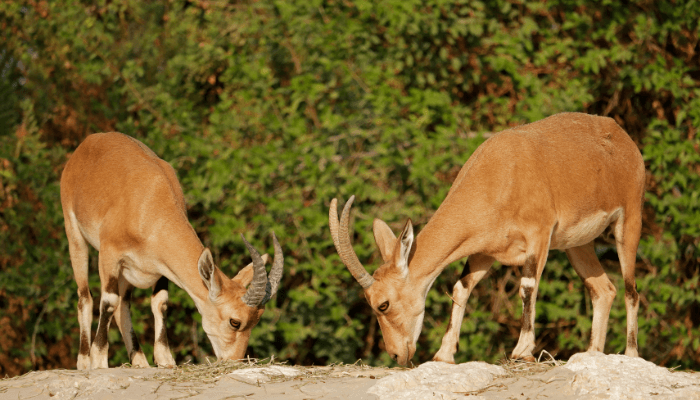
Coffee is cultivated on a small scale in Yemen while tobacco is grown near Hadhramaut shore. Medicinal herbs and natural dyes like indigo are found in southern regions. Resin is extracted locally from Mimosa plants and some types of cactus. Flowering plants are a rare sight however the roses of Taif are a sight to behold.
The rugged terrain is traversed on a camel; bedouins also own numerous sheep, goats and horses. Salukis and falcons are kept for hunting deer, rabbits and other small animals. Wolves, foxes, hyenas, baboons, cobra, lizards and scorpions live in the desert. The coastal areas house pelicans, pigeons, flamingoes, cuckoos etc.
7. Cradle of many ancient Civilisations
The Arabian peninsula was inhabited by Homo Sapiens who migrated from Africa to Arabia 95,000 years ago. This fact is corroborated by archaeological findings in the Al Wusta desert area which revealed fossilised remains of archaic human species.
Acheulian tools from the Palaeolithic period were found in parts of Saudi Arabia, indicating thriving human settlements. This is obvious since Arabia was a lush green land about 300,000 years ago. Prehistoric sites were discovered in Al-Qassam and Shuaib-Al-Adgham.
Romans controlled the region in the first century AD, after which numerous kingdoms like the Sheba, Awsan and others emerged in Southern Arabia. The largest civilisation was the Dilmun which flourished in eastern Arabia.
The Arabs were traditionally divided into different tribes which controlled strategic resources. Islam spread in the 7th century and powerful Islamic kingdoms like Fatimids, Ummayads and Abbasids gained ground in the region. In mediaeval times, much of the Peninsula was controlled by the Ottoman Empire. The modern era has witnessed growing dissensions, civil wars, coups and conflicts, especially in Iraq, Iran and Yemen.
8. Arabian peninsula offers a perfect holiday getaway
The Middle East is becoming a popular tourist destination for travellers. Endowed with fun-filled activities, sky-scrapers, sandy beaches and vibrant culture, the Arabian peninsula is sure to make a memorable holiday trip for all age groups.
Dubai is the most visited city in Arabia. It is a cosmopolitan centre known for Burj Khalifa, the world’s tallest building, illuminated skyscrapers, annual festivals like the global village, ski parks, shopping streets, desert safaris, aquarium and dolphin shows, water parks and so on.
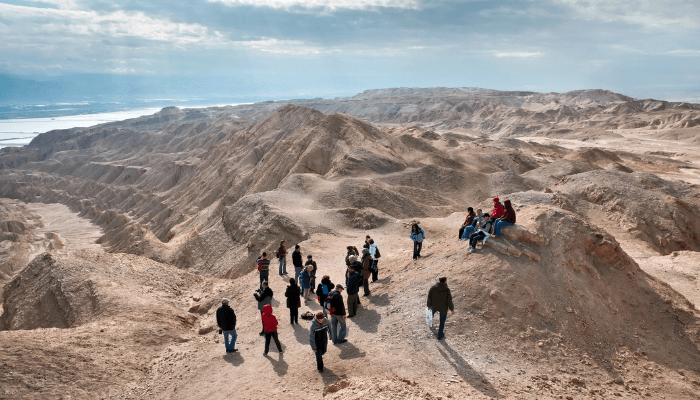
Ras Al Khaimah is located near the border of Iran. It has a pristine landscape, quiet beaches, ancient fort cities, Bedouin camps and museums. A truly historic city, it is a must-visit for all history enthusiasts.
Musandam in Oman is a famous cruise destination, known for its white-sand beaches, lofty hills and friendly dolphins. People visit Salah in the monsoon months for relaxing in the oases resort and to view the banana plantations and waterfalls.
The capital of Yemen, Sana’a is one of the most beautiful places on the peninsula that takes you back in time. The humanitarian crisis has arrested Yemen’s economic growth however the country is renowned for its diverse culture. Lastly, Jeddah in Saudi Arabia is famous for its gold souq or the gold market. Qatar has several five-star hotels, fashion boutiques, iconic marinas and picturesque landscapes.
9. Arabian peninsula has the world’s largest oases
The Arabian Peninsula exhibits diverse topography. It has a central plateau with valleys and fertile areas for grazing livestock. Oases and marshes exist in eastern parts while the red sea coast is lined with coral reefs. The only source of water is seasonal streams which form wadis. Al-Ahsa and Qatif are the two biggest oases in the world.
Al-Ahsa is situated in eastern Arabia near the Abqaiq province. It contains lush gardens, ancient canals and waterworks, wells and inland lakes. Humans have lived in the oases from the Neolithic period onwards as evident from historical findings. It has 2.5 million date palms, forts, mosques and archaeological sites.
One of the oldest settlements in Saudi Arabia, Qatif has fertile soil that supports agriculture. The region has many natural springs and fortifications built to repel Portuguese attacks in the 15th century. The eastern coastline of the coastal city borders the Red sea. Hence, Qatif was once an important trading post for Arabs.
10. Home to the ninth-busiest port in the World
Jebel Ali is situated in southern Dubai on the Persian Gulf coast. It has the largest artificial harbour and 77 berthing facilities for accommodating the world’s biggest ships. Equipped with the latest technologies and equipment, it stands unrivalled as the premier port of the Arabian Peninsula. It was built in 1979 to ease congestion at Port
Rashid.
It handles RORO, containerised cargo, break bulk, general cargo and oil tankers. The port is being expanded and a new western quay is under construction. Approximately 14,000 ships and 77,400,000 tonnes of cargo including 13,000,000 TEUs are handled at the port every year.
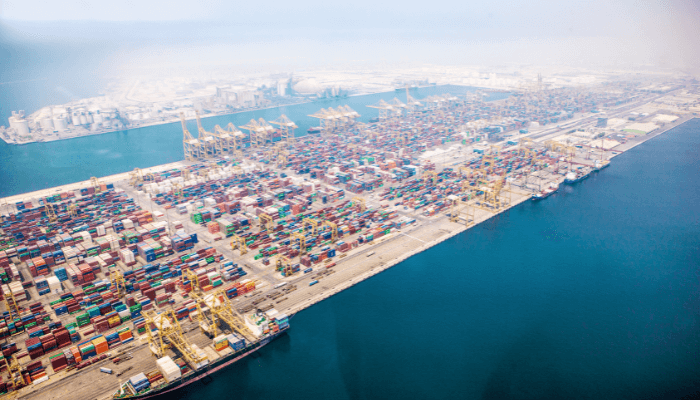
Operated by DP World, it has numerous specialised terminals. Storage areas include a million square metre container handling area, seven warehouses covering 19,000 m2 and 12 sheltered storage areas for keeping loose cargo. 950,000 m2 of open paved yards are also available.
Yanbu port is the second-largest commercial harbour in Arabia. Situated on the Red Sea coast, 350 kilometres from Jeddah, it is one of the most important seaports in Saudi Arabia. Constructed in the 1970s, about 65 million tonnes of cargo pass through the port annually.
You might also like to read:
- 11 Important Facts About The Sea Of Japan
- 9 Interesting Facts About the Weddell Sea
- 10 Amazing Facts about Baltic Sea
- 10 Interesting Facts About The Tasman Sea
- 10 Facts About The Laccadive Sea
Disclaimer: The authors’ views expressed in this article do not necessarily reflect the views of Marine Insight. Data and charts, if used in the article, have been sourced from available information and have not been authenticated by any statutory authority. The author and Marine Insight do not claim it to be accurate nor accept any responsibility for the same. The views constitute only the opinions and do not constitute any guidelines or recommendations on any course of action to be followed by the reader.
The article or images cannot be reproduced, copied, shared or used in any form without the permission of the author and Marine Insight.
Do you have info to share with us ? Suggest a correction

About Author
Zahra is an alumna of Miranda House, University of Delhi. She is an avid writer, possessing immaculate research and editing skills. Author of several academic papers, she has also worked as a freelance writer, producing many technical, creative and marketing pieces. A true aesthete at heart, she loves books a little more than anything else.
Latest Maritime Knowledge Articles You Would Like:
Subscribe To Our Newsletters
By subscribing, you agree to our Privacy Policy and may receive occasional deal communications; you can unsubscribe anytime.















